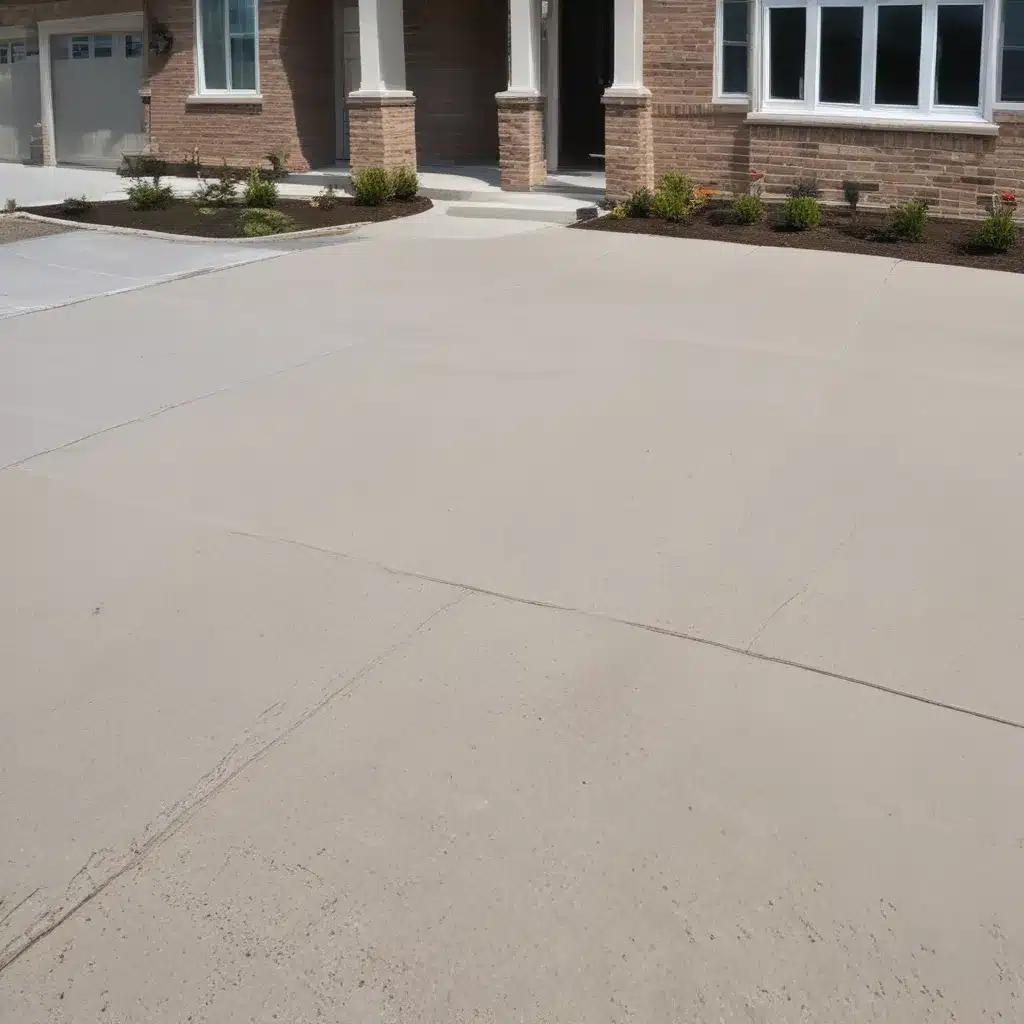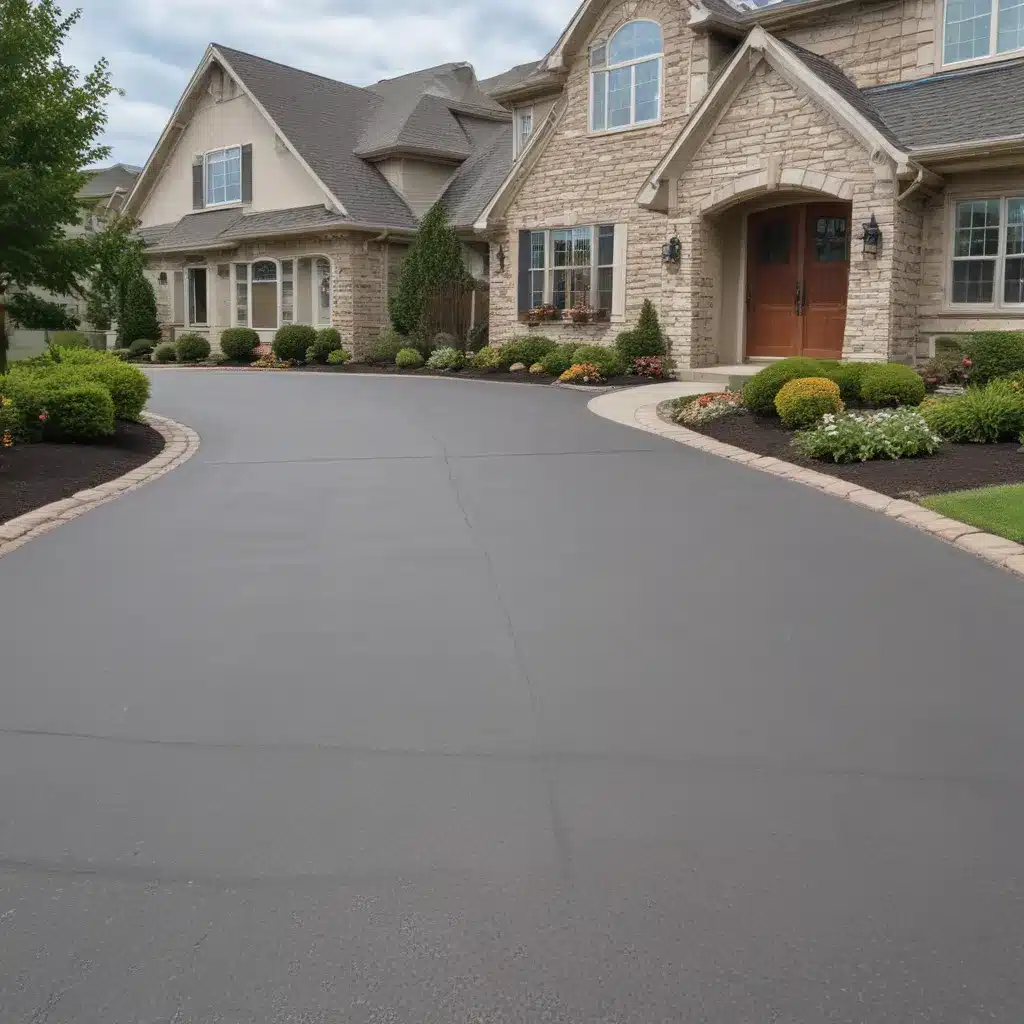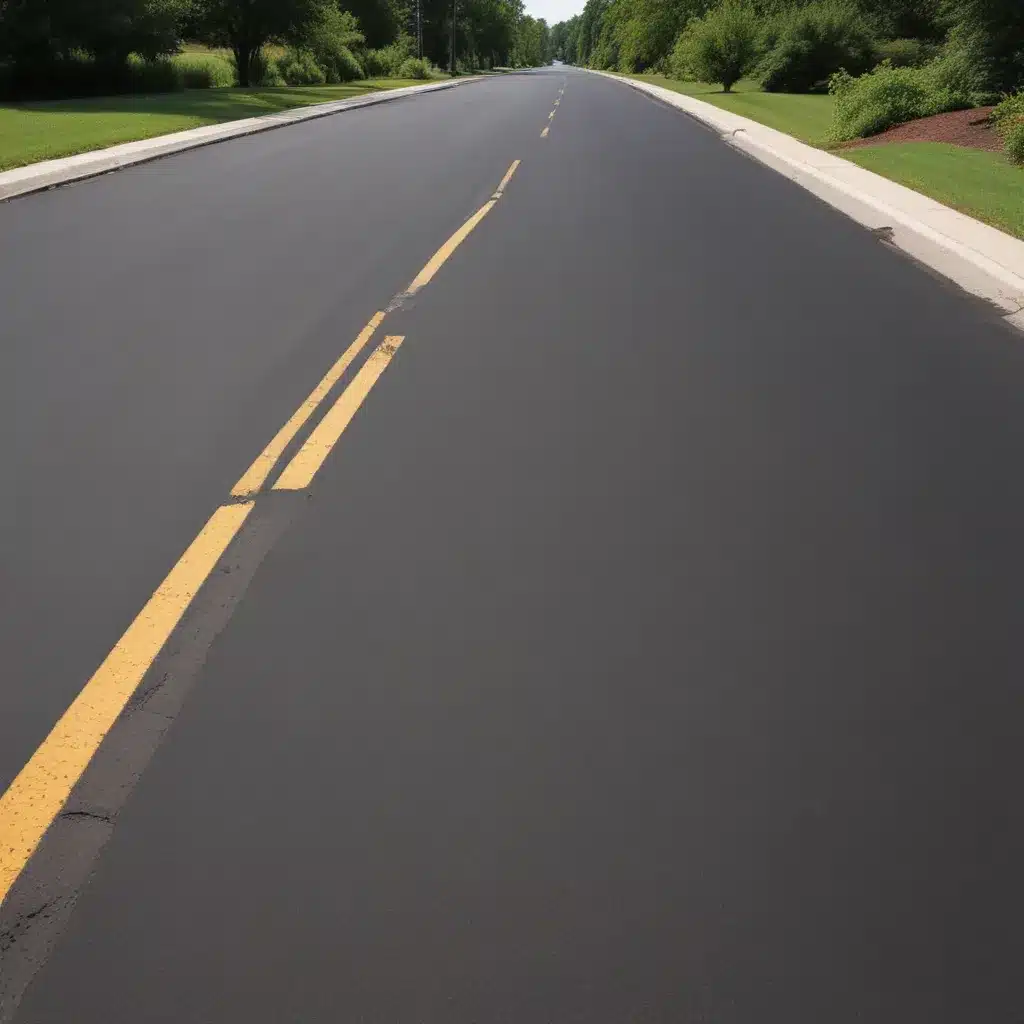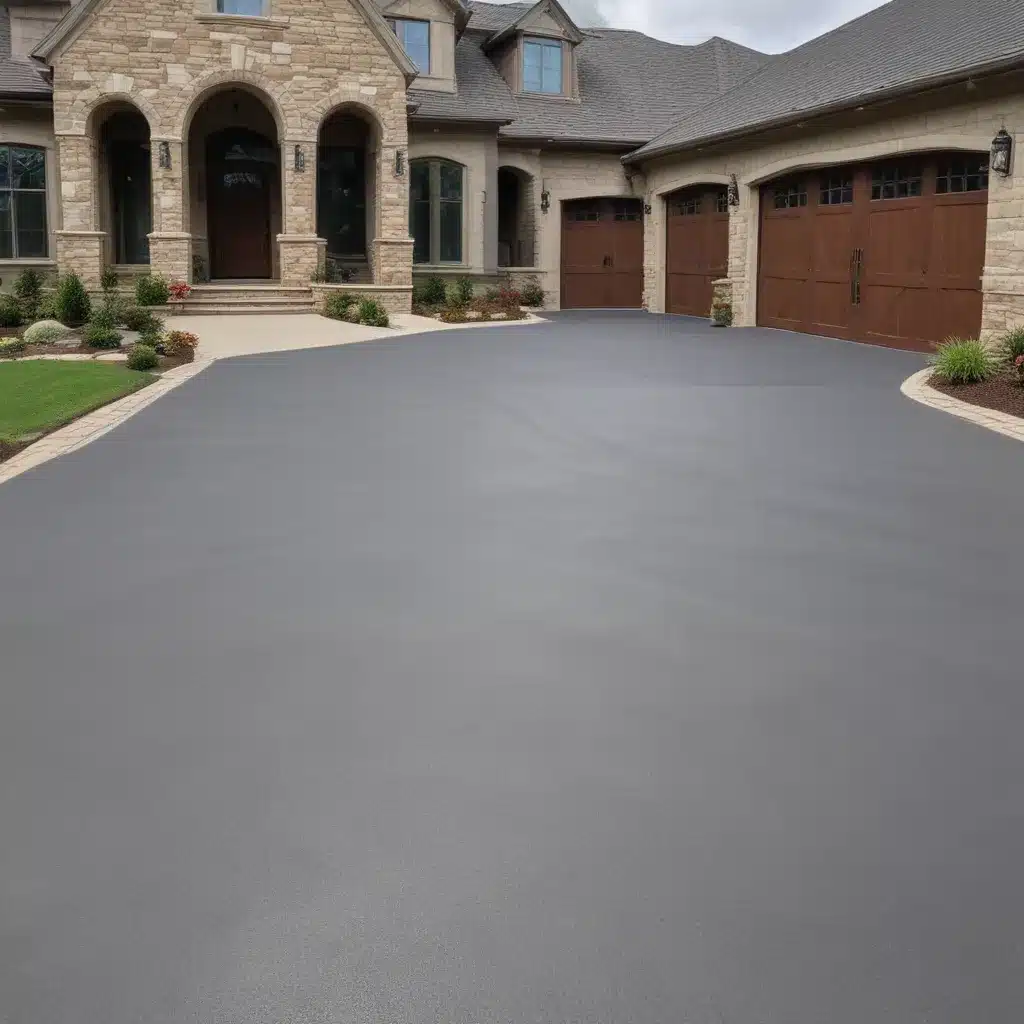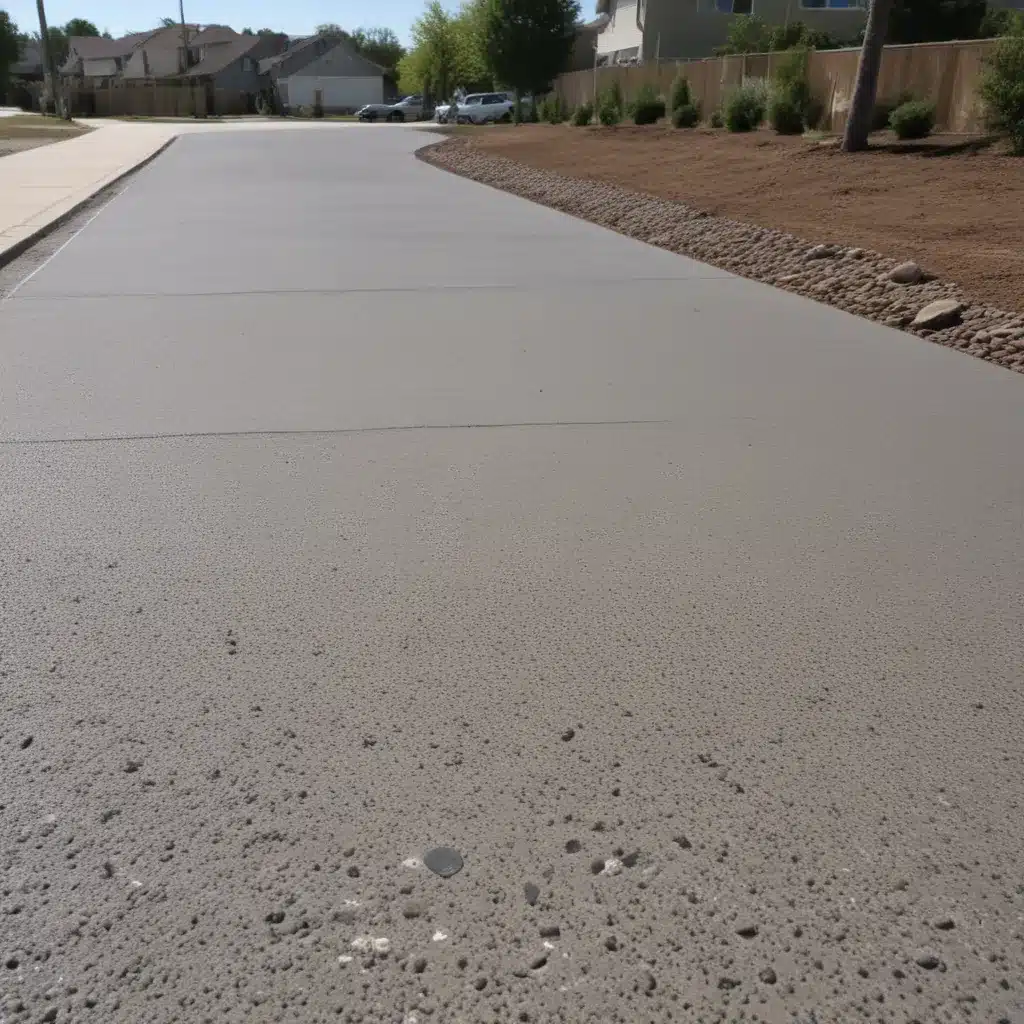The Concrete Conundrum: Facing the Challenges of Driveway Deterioration
Ah, the humble concrete driveway – often an overlooked piece of our home’s infrastructure, yet crucial in maintaining the curb appeal and functionality of our property. But let me tell you, these slabs of gray matter can be tricky beasts. Just the other day, I was backing out of my driveway when I noticed a few worrying cracks snaking across the surface. My heart sank; visions of costly repairs and unsightly eyesores danced in my head.
You see, as a homeowner, I’ve learned that concrete driveways can be a bit like high-maintenance partners – they require constant attention and care to keep them looking their best. And trust me, I’ve had my fair share of driveway drama over the years. From unsightly stains and discoloration to uneven settling and the dreaded potholes, it’s enough to make even the most stoic of us want to throw in the trowel (or should I say, the shovel).
But fear not, my fellow driveway enthusiasts! In this comprehensive guide, I’m going to share with you the secrets to extending the lifespan of your concrete slab and keeping it looking as fresh as the day it was laid. We’ll explore the common culprits of driveway deterioration, dive into the nitty-gritty of proper maintenance and repair techniques, and uncover the latest innovations in driveway care. By the time we’re done, you’ll be a bona fide concrete connoisseur, ready to take on any driveway dilemma that comes your way.
Deciphering the Driveway Dilemma: Understanding the Causes of Concrete Degradation
Before we can tackle the solutions, we need to understand the root causes of concrete driveway deterioration. And let me tell you, it’s a veritable smorgasbord of potential problems. From the elements to good old-fashioned wear and tear, there are plenty of factors that can wreak havoc on our beloved driveways.
One of the primary culprits? Mother Nature herself. You see, concrete is a porous material, and when it’s exposed to the elements, it can really take a beating. Think about it – harsh winters with freezing temperatures and heavy snowfall can cause the concrete to expand and contract, leading to cracks and crumbling. And let’s not forget about the scorching summer sun, which can bake the surface, causing unsightly discoloration and weakening the structural integrity.
But it’s not just the weather that can do a number on our driveways. Heavy usage can also take a toll, especially if we’re constantly hauling heavy loads or parking our vehicles on the same spot day in and day out. Over time, this constant pressure can cause the concrete to become uneven, creating those dreaded potholes and bumps that can wreak havoc on our tires and suspension.
And let’s not forget about the impact of chemicals and other contaminants. From road salt and de-icing agents to oil and grease spills, these pesky substances can seep into the concrete, causing it to break down and deteriorate at an alarming rate. It’s like a concrete version of a bad case of the flu – one minute everything’s fine, and the next, you’re dealing with a full-blown crisis.
Now, I know what you’re thinking – “But wait, my driveway was just installed a few years ago, how can it already be falling apart?” And that’s a fair question. The truth is, even brand-new concrete driveways can be susceptible to these issues, especially if they weren’t properly installed or cured in the first place. Shoddy workmanship, poor drainage, and even the use of substandard materials can all contribute to a driveway’s premature demise.
So, what’s the takeaway here? Well, it’s simple really – when it comes to the health and longevity of our concrete driveways, we need to be proactive and vigilant. By understanding the various threats to our slabs, we can take the necessary steps to protect them and ensure they continue to serve us for years to come. And trust me, the alternative – dealing with the headache and expense of a full-blown driveway replacement – is not a road any of us want to go down.
Staying on Top of Maintenance: Proven Strategies for Preserving Concrete Driveways
Now that we’ve explored the common culprits of driveway deterioration, it’s time to dive into the nitty-gritty of proper maintenance and repair. After all, an ounce of prevention is worth a pound of concrete (or something like that).
One of the most crucial steps in keeping your driveway in tip-top shape? Regular cleaning and sealing. That’s right, folks – those unsightly stains and discoloration aren’t just an eyesore; they can also be a sign of deeper structural issues if left unchecked. That’s why it’s important to give your driveway a good scrubbing at least once a year, using a specialized concrete cleaner to remove any built-up grime, oil, or other contaminants.
But cleaning is just the first step. Once your driveway is sparkling clean, it’s time to break out the sealant. Concrete sealants act as a protective barrier, shielding your driveway from the elements and helping to prevent the dreaded cracks and crumbling that can occur over time. And let me tell you, the options are endless – from clear, glossy finishes to textured, slip-resistant coatings, there’s a sealant out there to suit every homeowner’s needs and preferences.
Of course, cleaning and sealing is just the tip of the iceberg when it comes to driveway maintenance. It’s also crucial to keep an eye out for any signs of damage, and address them promptly before they turn into larger, more costly issues. This means regularly inspecting your driveway for cracks, potholes, and other signs of wear and tear, and taking swift action to repair any problem areas.
Now, I know what you’re thinking – “Repair? But I’m not a concrete expert!” Well, fear not, my friends. Driveway repair doesn’t have to be a daunting task. In fact, there are plenty of easy-to-use products and DIY-friendly techniques that even the most novice homeowner can tackle. From concrete sealers and epoxy fillers to specialized patching compounds, the tools and materials you need to keep your driveway looking its best are readily available and surprisingly user-friendly.
And let’s not forget about the importance of proper drainage. After all, standing water can be a driveway’s worst enemy, leading to all sorts of nasty issues like cracking, heaving, and even the dreaded potholes. That’s why it’s essential to ensure your driveway is sloped properly and that any drainage systems (like French drains or catch basins) are functioning as they should.
So, there you have it – the keys to keeping your concrete driveway in tip-top shape. From regular cleaning and sealing to prompt repair and proper drainage, the secret to a long-lasting, low-maintenance driveway is all about being proactive and staying on top of those maintenance tasks. And trust me, the effort is well worth it – not only will your driveway continue to look its best, but you’ll also be saving yourself a whole lot of headache (and cash) in the long run.
Innovating the Concrete Landscape: Exploring the Latest Driveway Solutions
But wait, there’s more! As if the world of driveway maintenance and repair wasn’t exciting enough, the concrete industry has been bustling with innovation, introducing all sorts of cutting-edge solutions to help homeowners like you keep their driveways looking and functioning their best.
One of the latest and greatest developments? Pervious concrete. Now, I know what you’re thinking – “Pervious what now?” Hear me out, because this stuff is a game-changer. Pervious concrete is a special type of porous pavement that allows water to filter through, rather than pooling on the surface. This not only helps to prevent the dreaded potholes and cracks caused by standing water, but it also reduces the risk of flooding and improves overall drainage.
And the best part? Pervious concrete is just as durable and long-lasting as its traditional counterpart, with the added benefit of being more environmentally friendly. No more worrying about those nasty chemicals and contaminants seeping into the groundwater – with pervious concrete, it’s all about letting Mother Nature do her thing.
But wait, there’s more! Another innovative solution that’s been making waves in the driveway world? Decorative concrete. That’s right, folks – concrete doesn’t have to be the boring, gray slab of yesteryear. These days, you can find all sorts of stunning, customizable finishes that can transform your driveway into a true work of art.
From stamped and stained designs that mimic the look of natural stone or brick, to exposed aggregate surfaces that add a touch of textural interest, the options are truly endless. And the best part? These decorative concrete solutions not only add curb appeal to your home, but they can also be surprisingly durable and low-maintenance.
Of course, with any new and innovative product, it’s important to do your research and work with a reputable contractor to ensure the job is done right. But trust me, the end result is well worth the effort. Imagine pulling into your driveway every day and feeling a sense of pride and joy, rather than a sinking feeling of dread. Sounds pretty nice, doesn’t it?
Putting it All Together: Creating a Driveway That Stands the Test of Time
Alright, folks, we’ve covered a lot of ground here – from the common culprits of driveway deterioration to the latest and greatest solutions for keeping your concrete slab looking its best. But now, it’s time to put it all together and create a driveway that’s going to stand the test of time.
First and foremost, it’s all about starting with a solid foundation. And I’m not just talking about the literal concrete beneath your tires – I’m talking about working with a reputable, experienced contractor who knows their stuff when it comes to driveway installation and design. After all, a poorly installed driveway is just begging for trouble down the road.
Once you’ve got the foundation in place, it’s time to focus on the maintenance and repair side of things. Regular cleaning, sealing, and inspections should be at the top of your to-do list, along with promptly addressing any cracks, potholes, or other signs of wear and tear. And don’t be afraid to explore those innovative solutions we talked about, like pervious concrete or decorative finishes – they just might be the perfect way to take your driveway to the next level.
But the real key to a long-lasting, low-maintenance driveway? Staying vigilant and being proactive. Because let’s face it, when it comes to concrete, an ounce of prevention is truly worth a pound of cure. By staying on top of those maintenance tasks and catching any issues early, you can save yourself a whole lot of time, money, and headache down the road.
And who knows, with a little TLC and some creative thinking, you might just end up with a driveway that’s the talk of the neighborhood. Imagine it now – your friends and neighbors strolling by, admiring your pristine, perfectly-maintained slab of concrete, and thinking, “Wow, how do they do it?” Well, my friends, the secret is out – it’s all about knowing the right tricks of the trade and being willing to put in a little elbow grease.
So, there you have it – the ultimate guide to extending the life of your concrete driveway. From understanding the common culprits of deterioration to exploring the latest and greatest solutions, we’ve covered it all. And let me tell you, the rewards of a well-maintained driveway are truly priceless. Not only will you be saving yourself a bundle in the long run, but you’ll also be able to take pride in the fact that your home’s curb appeal is always on point.
Now, if you’ll excuse me, I think it’s time to go give my driveway a little TLC. After all, a homeowner’s work is never done, am I right? But hey, at least I know I’ll be saving my slab for years to come.

